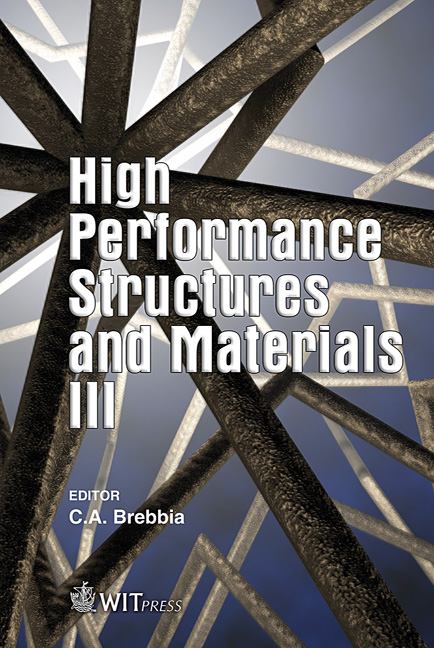Influence Of Dynamic Loads On The Optimum Design Of Trusses
Price
Free (open access)
Transaction
Volume
85
Pages
8
Published
2006
Size
463 kb
Paper DOI
10.2495/HPSM060021
Copyright
WIT Press
Author(s)
J. Van Steirteghem, W. Ponsaert, W. P. De Wilde & Ph. Samyn
Abstract
The Theory of Morphological Indicators allows a preliminary optimisation of structures at the stage of conceptual design. Samyn and Latteur developed the Indicator of Volume to determine the efficiency of structures at early design stages. The main advantage of this approach is that we only need a very limited number of parameters. Samyn establishes efficiency curves, with respect to minimum volume of material, for trusses in which he neglects buckling. Latteur establishes efficiency curves in which he accounts for buckling. The displacements are usually checked afterwards to verify if the normative constraints are not exceeded. In this paper we argue that for trusses, loaded dynamically and with large spans, dynamics become the dimensioning criterion. We use the Indicator of the First Natural Frequency to determine the first natural frequency of trusses. We find that for fully stressed trusses this natural frequency is usually near to the excitation frequencies of man induced and wind induced vibrations. Therefore, we need to include dynamics in the optimisation procedure. We show that for trusses with important spans very large stress reductions are necessary to obtain acceptable natural frequencies. This stress reduction comes at the cost of a very important and unacceptable increase of the volume of material. We determine which typology (Warren, Howe, Pratt) is the most efficient (minimal volume) with respect to dynamics. Moreover we show that when dynamics is the dimensioning criterion, the influence of buckling on the optimum design is negligible since an important stress reduction is necessary. Finally we propose a work scheme that allows considering dynamics in the Theory of Morphological Indicators and we provide an example. Keywords: conceptual design, morphological indicators, trusses, dynamics.
Keywords
conceptual design, morphological indicators, trusses, dynamics.





